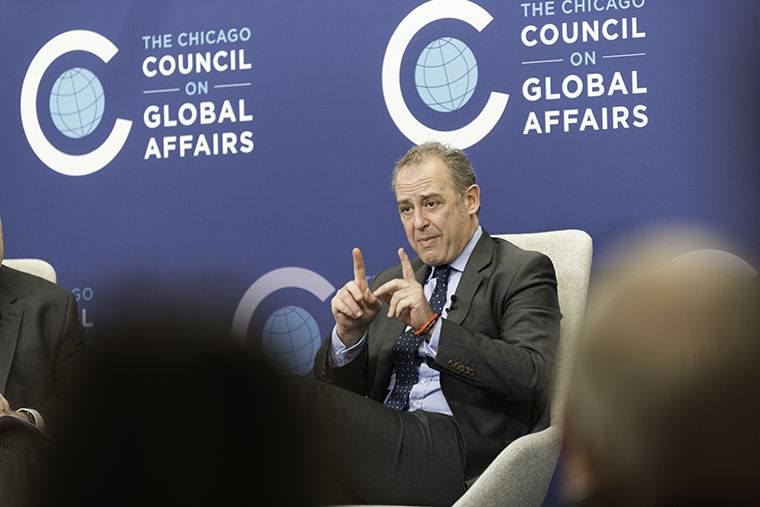US and Mexico: friends or foes?
March 13, 2017
The Trump administration has placed U.S.-Mexican relations in a precarious state, noted panelists at a recent discussion hosted by the Chicago Council on Global Affairs.
“What [Donald Trump’s] campaign and the first month of [his] administration has done is [throw the relationship] up in the air,” said Arturo Sarukhan, panelist and former Mexican ambassador to the U.S.
The council, a nonpartisan organization, hosted a March 6 open forum at 130 E. Randolph St. to discuss the uncertain future of relations between the two countries as the Trump administration continues to characterize Mexico as a trade rival and source of undocumented immigrants rather than as an ally and market for U.S. goods.
The two countries historically have had a strategic relationship to work cooperatively to solve common problems in a way that was mutually beneficial for well-being, security and prosperity, according to Sarukhan.
Trump’s promise to build a wall at the U.S.-Mexican border has “poisoned” public perceptions on both sides of the border after Mexico was treated like an “electoral piñata” in the 2016 election, he added.
Eric Farnsworth, vice president of the Americas Society and Council of the Americas, said trust between neighboring nations is the fundamental currency of politics. The Obama administration had a relationship with Mexico developed on trust, and the current political climate is fighting against that collaboration, he added.
“Trust doesn’t develop overnight,” Farnsworth said. “You can lose it overnight, but it takes a generation to develop.”
The North American Free Trade Agreement, which Trump heavily criticized during his campaign, is an example of what trust can accomplish, according to Sarukhan. The 1994 three-country trade accord among the U.S., Mexico and Canada is responsible for $1.4 billion a day of trade in both directions, and Mexico is the second-largest buyer of U.S. exports worldwide after Canada.
The agreement symbolically signified Mexico opening reciprocally to the United States, said moderator and senior fellow of the CCGA Phil Levy.
NAFTA has done what it was designed to do—increase jobs, trade and investment within the three countries—according to Farnsworth. Though Farnsworth has been with NAFTA since its inception, he recognizes it has its share of flaws.
Farnsworth said for the U.S. to engage in a free trade agreement with a developing country was “cutting edge” for its time, but noted the agreement could be modernized, especially because each country’s economic futures were impossible to predict.
“What we’re doing is asking NAFTA to organize the majority of trade among three countries in a way that didn’t contemplate the direction the economy has subsequently gone in terms of technology and developing all kinds of sectors,” he said.
Sarukhan said he does not think participation in NAFTA has ever played a driving role in a Mexican presidential campaign as it did in the 2016 U.S. campaign. That attitude might change if conversations unravel and Trump withdraws the U.S. from the treaty, he added.
Democratic and Republican politicians have been using NAFTA as the “easy answer” scapegoat for unemployment, Farnsworth said.
“It’s not just a President Trump thing; Hillary Clinton on the campaign said the same thing,” he said. “Both leading political parties in the U.S. [are] simultaneously saying NAFTA is the problem.”
Farnsworth said a breakdown of U.S.-Mexico relations could dial up the volume of rhetoric on both sides of the border.
“Mexico and the U.S. have done great things together , [and] we can continue to do [that],” Sarukhan said in response. “The one thing we’re not going to do together is build a wall.”








